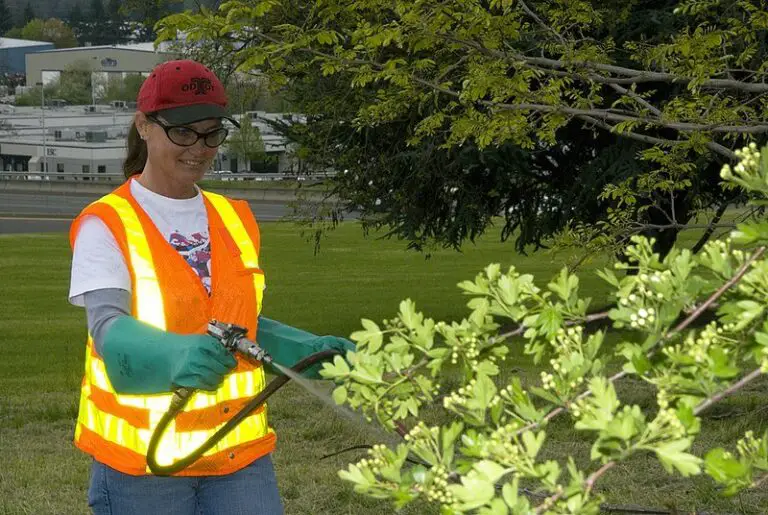11 Importance of Forest Ecosystem Explained
The importance of forest ecosystem include; hazard mitigation, climate modification, environmental conservation, biodiversity conservation, health importance, recreation, cultural relevance, economic innovation, resource-supply, job creation, manufacturing and commerce.
They can be broadly classified into environmental, social and economic importance, in line with the principle of sustainable development.
Importance differs from functions of forest ecosystem, in that the latter is concerned with the role played by forests, while the former shows the relevance of forests.
This article discusses the importance of forest ecosystem;
-Environmental Importance of Forest Ecosystem
-Social Importance of Forest Ecosystem
-Economic Importance of Forest Ecosystem
Environmental Importance of Forest Ecosystem
1). Hazard Mitigation
Forests mitigate hazards like flooding, erosion, landslides, and disease outbreak.
-Flooding
The forest ecosystem plays an important role in mitigating some natural hazards, within their environs.
One of the natural hazards that is mitigated by forests is flooding [23].
There are two main ways in which forests mitigate flooding (and erosion). Firstly, the vegetation cover (or canopy) in a forest, intercepts erosive agents like wind and rainfall as they enter into forest terrains. As a result, the velocity, pressure and effectiveness of these agents are diminished as they approach the ground.
This means that wind and rainfall do not penetrate forests with as much pressure and effectiveness as they would penetrate barren land or urban settlements.
The mechanism described above can be seen as a natural land-protection process. It is based on such natural mechanisms that some practices of sustainable agriculture like cover cropping and crop rotation have been developed.
Secondly, as the water and wind reach the ground, their effect is further diminished by absorption and infiltration. The presence of plants roots, organic matter or biomass, and a large population of soil organisms like earthworms and termites in forest soils, make these soils to be highly absorbent compared to soils in other biomes.
Therefore, rather than create floods or cause erosion and environmental degradation, water and wind are intercepted, slowed, and subsequently absorbed by forest ecosystems. This also protects the environs around forests, from these hazards.
-Landslides and Mass Movement
Aside flooding and erosion, forests mitigate the risk and impact of landslides and all forms of mass movement [3].
The reason for this is that forest soils are held firmly in place by roots of vegetation. These roots provide structural support to the soil. Also, the relatively undisturbed and stable conditions in forest ecosystems, allow forest soils to develop a healthy and resilient structure.
-Disease Outbreak
By serving as a natural habitat for various animal species, forests can limit the interaction between such species and the human population.
This reduces the spread of zoonotic diseases caused by pathogens from wild animals.
However, when deforestation occurs, the interaction between humans and wild animals increases, along with the incidence of zoonotic diseases [5]. This is obvious, and can be observed in cases like Ebola and corona virus outbreak, both resulting from pathogens carried by wild animals.
-Wave-related Hazards
While wave power is an important form of renewable energy, it is also a cause of some natural hazards like tsunamis, coastal flooding and hurricanes [22].
Types of forests ecosystem in coastal areas are mainly tropical mangrove and tropical moist. These forests have a stabilizing effect on the climate, air currents, and soil stability within their environs, that reduces the risk of wave-related hazards.
When coastal forests are lost to deforestation, the rate of occurrence of such hazards usually increases.
2). Importance of Forest Ecosystem in Climate Modification
Forests help to modify or regulate the climate in such a manner that leads to sustainability and mitigates global warming and climate change [19].
There are various ways in which forests modify the climate. These include greenhouse gas absorption, photosynthesis, oxygen and bioenergy production, carbon capture and storage, temperature regulation and cloud formation.
-Greenhouse Gas Absorption
Greenhouse gases like carbon dioxide and nitrous oxide are known to have unfavorable impacts on the climate, by contributing to global warming [4].
Forest vegetation can reduce the concentration of such greenhouse gases by absorbing them through leaf stomata, during their metabolic processes.
-Photosynthesis
In the case of carbon dioxide, forest vegetation can utilize this gas in the process of photosynthesis, to produce their own food [24].
At the same time, oxygen is produced as a byproduct, which is an important gas for survival of living organisms, and optimization of biological processes like biodegradation.
-Bioenergy Production
The energy produced by forest vegetation through photosynthesis is bioenergy, a renewable form of energy that is stored in biomass [8].
By producing bioenergy, forest vegetation introduces energy resources into the ecosystem. This energy is utilized by all organisms in the ecosystem, indirectly or directly, as explained by the structure of forest ecosystem based on food chain, food web and energy pyramid.
Aside being used by living organisms for survival, bioenergy is also useful for other purposes like heating, cooling, cogeneration, and electricity generation [7]. It can be classified alongside other renewable alternatives like solar energy, wave power, wind energy, and geothermal energy.
When biomass from forests is converted in a biorefinery, using any of various biomass-conversion methods, the main products include biofuel. This fuel is very important as a potential alternative to fossil fuels.
Refined biofuel is believed to produce less emissions than fossil fuels [20], and is therefore considered better for the climate.
-Carbon Sequestration
The forest ecosystem is a natural carbon sink [25]. This means that large quantities of carbon are stored in forests.
Through photosynthesis and feeding, carbon is stored in forest biomass as a biochemical component. Through sequestration, carbon is also stored in soil [11].
It is estimated that the annual storage of carbon dioxide in forests worldwide, amounts to billions of metric tons [21]. This carbon would otherwise be in the atmosphere as carbon dioxide; a greenhouse gas and potential cause of climate change.
Therefore, the existence and conservation of forests is a means of keeping carbon dioxide out of the atmosphere, and storing it safely.
-Temperature Regulation
One importance of forest ecosystem is temperature regulation.
The ways in which forests regulate environmental temperature are numerous. One of these is through absorption of solar radiation.
Forest vegetation intercepts and absorbs solar radiation within their environs, thereby preventing this heat-and-light energy from reaching the Earth. This usually leads to photosynthesis, and reduces environmental temperatures during periods of high solar intensity.
Such an effect means that the severity of hazards like heat waves can be mitigated by forests, although forest fires may sometimes occur [10].
Forests also produce large amounts of oxygen that may form cool air currents or breeze.
Lastly, through large-scale evapotranspiration, forests can participate in cloud formation and precipitation [2].
3). Environmental Conservation
The importance of forest ecosystem includes air conservation, soil conservation, and water conservation. These three components make up the environment. Each of them is discussed below;
-Air conservation
Forests are important both for the conservation and maintenance of air quality [14].
This is crucial, given the fact that diseases caused by air pollution are common and lead to many deaths each year.
Particulate materials in air are physically intercepted by forest vegetation and removed, thereby making the air cleaner. Such pollutants can cause lung cancer and other illnesses when inhaled [9].
Greenhouse gases like carbon dioxide and nitrogen dioxide, as well as other toxic gaseous pollutants like sulfur dioxide and ammonia, can be absorbed by forest vegetation, thereby improving the quality of air.
Forests also maintain air quality by recycling carbon and producing oxygen.
-Soil Conservation
Forests conserve soil by mitigating erosion, improving organic content and fertility, and optimizing structural characteristics of soil.
Vegetation cover of forests, protect the soil from erosion by wind or water. This vegetation acts as cover crops, preventing agents of erosion from having any significant mechanical impact on soil.
Forests supply organic matter to the soil. This may be in the form of plant leaves and fallen trees, animal waste, or remains of dead animals.
When such organic materials continuously fall upon forest soil, they form a layer of biomass that decomposes to form soil nutrients. The process can be viewed as a natural form of composting or organic fertilizer application. It usually results in improved fertility and productivity of forest soil.
Lastly, forests conserve soil by optimizing the structural attributes of the soil. Usually, this is as a result of the growth of plant roots that penetrate the soil, creating spaces that allow air and water to infiltrate.
Processes like nitrogen fixation and carbon sequestration are common in forests. These processes modify the physicochemical attributes of the soil.
The activities of soil organisms in forests, also lead to improved soil structure. These include burrowing, fixation, feeding, respiration, death and biodegradation.
-Water Conservation
The ways in which forests conserve water resources include recycling, runoff mitigation, filtration and storage.
In terms of recycling, forests play a major role in the hydrological cycle, through infiltration, percolation, evapotranspiration, and condensation.
Water which is absorbed by soil and vegetation is subsequently released into the atmosphere through evapotranspiration. Because forests recycle large volumes of water each year, they can be considered a source of clean water.
Forests mitigate stormwater pollution and runoff by increasing the absorption and moisture content of soil.
Lastly, as water is absorbed by forest soils, chemical and physical pollutants are reduced. The end-product is clean, potable water that is stored in underground aquifers.
4). Biodiversity Conservation as an Importance of Forest Ecosystem
It is estimated that forests serve as a habitat for up to 80 percent of all terrestrial species on Earth [17].
These species include microorganisms, mammals, oviparous animals, and plants.
Based on this, it can be said that forests are important to conserve biodiversity. Because of the ecologic complexity of the forest ecosystem compared to others like the grassland and the tundra biome, numerous groups of organisms have adapted to the conditions of this habitat.
As a result, the loss of forests leads to a loss of biodiversity. Many species have gone extinct and others are endangered by deforestation, hunting, and other human activities.

Social Importance of Forest Ecosystem
5). Health Importance
The importance of forest ecosystem includes health and wellbeing.
There are various ways in which forests contribute positively to public health. These include food supply, environmental maintenance, and medicinal raw materials.
-Food Supply
Food insecurity and world hunger are prominent problems, which are included among the 17 sustainable development goals, as urgent challenges to be resolved [12].
For populations which live within the environs of forests, the forest ecosystem is a viable source of food. These include fruits, vegetables, and edible protein from animals like deer, birds, rodents, and fish.
In food preparation, many people in rural areas depend on bioenergy from solid biofuel or firewood. This fuel can be derived from forests.
Lastly, the study of forests has provided knowledge which has helped to develop some principles of sustainable agriculture like climate change-reversal, resource conservation, integrated management, and soil restoration. Application of these principles leads to increased production of food, and can address food shortage problems even in regions affected by desertification.
-Environmental Maintenance
Forests improve public health by maintaining and conserving the quality of air, water and soil.
It is possible to view the function of forests as a natural form of bioremediation and environmental management, since it plays a role in environmental remediation. The positive effect of the forest ecosystem on environmental quality, reduces the risk of illnesses caused by pollution.
-Medicinal Raw Materials
Materials used to produce many medical and pharmaceutical products are gotten from forest plants and other resources in forest ecosystems.
Extracts from forest plants have been used as ingredients to manufacture drugs for the treatment of illnesses like cancer and malaria [6].
Aside refined products barks and herbs from forests are used extensively as local medicine, especially in rural areas.
6). Importance of Forest Ecosystem as a Recreational Resort
With the establishment of games reserves and other tourist destinations within forested areas, it is accurate to say that recreation is one of the importance of forest ecosystem [26].
Forest features like trees, wildlife and waterfalls are attractive as recreational spots, either for sight-seeing, or for other activities like biking, hiking and camping.
7). Cultural Importance
Forests are symbolic in many cultures.
This may be for religious purposes, rites, agriculture, local medicine, or other cultural uses.
Also, for many cultural groups, the forest ecosystem is of historical importance and is attached to traditions and folklores and art, that are considered sacred. For such cultures, the loss of forests would mean a loss of their customs and cultural identities.

Economic Importance of Forest Ecosystem
8). Importance as a Resource-base
The economic importance of forest ecosystem includes its relevance as a resource-base for mining, agricultural production, energy, and export industries.
-Mining
All types of ecosystems contain economic mineral deposits as well as oil and natural gas. This includes the forest ecosystem.
Due to their geochemical complexity and long-term stability compared to human-inhabited areas, forests are ideal environments for mineral deposits to accumulate.
For example, the boreal forests of Canada contain deposits of various minerals including lode gold, vanadium, iron and titanium [1].
-Agricultural Production
One of the common ways in which forests contribute to agricultural production is by providing vegetation for cattle grazing [15].
Like grasslands, forests can be grazed by cattle. This is especially possible in mountainous regions and forests with less-dense vegetation. Aside direct grazing, vegetation can be taken from forests to be used as livestock feed.
Forests also enclose, conserve and protect water catchment areas and river basins. These sources of water can be used for irrigation purposes.
Soil within the vicinity of forests is usually of good quality. This soil can be used for agriculture with high yield. Also, the natural process of organic manure production in forests has been adopted by agriculturists as part of sustainable farming.
-Energy Production
The bioenergy sector depends on forests, both directly and indirectly.
Biomass fuel can be derived directly from forests in the form of harvested wood and forest residue. Otherwise, the climate-modifying function of forests can improve the growth of biofuel crops in plantations.
-Export
Resources from forests can bring revenue to a region or country through export [16].
Such resources include timber, resins, dyes, spices, seeds, medicinal barks, and processed biofuel.
9). Importance of Forest Ecosystem in Economic Innovation
The forest ecosystem is important as a driver and influencer of economic innovation.
Agricultural innovation in terms of techniques and methods, has been developed based on information gathered from the study of forests. Such information outlines the factors that are essential for plant growth and animal productivity.
Other areas of economic innovation such as urban development, have also been affected by forests. For example, deforestation is a factor of concern in projects for sustainable urban planning, artificial intelligence and smart house technology [18].
10). Job Creation in Forest Management
Numerous jobs have been created due to the existence of forests [13].
These include jobs in forestry management, agroforestry, timber logging, mining, and construction.
People who live within the vicinity of forests may also make their living as forest rangers, tour guides, and even as hunters.

11). Importance of Forest in Manufacturing and Commerce
Forest ecosystems produce numerous materials that are useful in manufacturing and commerce.
These include coffee, rubber, biofuel, and oil palm. Manufactured and sellable products from these materials are furniture, cosmetics, paper, electricity, beverages, stationaries, and utensils.
Conclusion
The environmental, social and economic importance of forest ecosystem include;
- Hazard Mitigation
- Climate Modification
- Environmental Conservation
- Biodiversity Conservation
- Health Importance
- Recreational Resort
- Cultural Importance
- Resource-Supply
- Economic Innovation
- Job Creation
- Manufacturing and Commerce
References
1). Bogdanski, B. (2008). “Canada’s boreal forest economy: economic and socio-economic issues and research opportunities.” Canadian Forest Service, Pacific Forestry Centre Report. Available at: https://www.researchgate.net/publication/264040453_Canada’s_boreal_forest_economy_economic_and_socio-economic_issues_and_research_opportunities. (Accessed 10 August 2022).
2). Brauman, K.; Freyberg, D. L.; Daily, G. C. (2012). “Potential evapotranspiration from forest and pasture in the tropics: A case study in Kona, Hawai‘i.” Journal of Hydrology s 440–441:52–61. Available at: https://doi.org/10.1016/j.jhydrol.2012.03.014. (Accessed 10 August 2022).
3). Cislaghi, A.; Sangalli, G. B.; Sali, G.; Bischetti, G. B. (2019). “Planning forest management to reduce landslide risk along a railway line: a case study in Valle Camonica.” EGU General Assembly 2019, Vienna. Available at: https://www.researchgate.net/publication/332303793_Planning_forest_management_to_reduce_landslide_risk_along_a_railway_line_a_case_study_in_Valle_Camonica. (Accessed 10 August 2022).
4). Darkwah, W. K.; Odum, B.; Addae, M.; Koomson, D.; Danso, B. K.; Oti-Mensah, E.; Asenso, T. O.; Buanya, B. A. (2018). “Greenhouse Effect: Greenhouse Gases and Their Impact on Global Warming”. Journal of Scientific Research and Reports 17(6):1-9. Available at: https://doi.org/10.9734/JSRR/2017/39630. (Accessed 10 August 2022).
5). Das, G. K. (2020). “Wildlife, Deforestation and Spread of Zoonotic Diseases.” Available at: https://www.researchgate.net/publication/341451692_Wildlife_Deforestation_and_Spread_of_Zoonotic_Diseases. (Accessed 10 August 2022).
6). Desai, A.; Oazi, G. N.; Ganiu, R. K.; El-Tamer, M.; Singh, J.; Saxena, A.; Bedi, Y. S.; Taneia, S.; Bhat, H. K. (2008). “Medicinal Plants and Cancer Chemoprevention.” Current Drug Metabolism 9(7):581-91. Available at: https://doi.org/10.2174/138920008785821657. (Accessed 10 August 2022).
7). Galvão, J. R.; Leitão, S.; Malheiro, S.; Gaio, T. (2011). “Cogeneration supply by bio-energy for a sustainable hotel building management system.” Fuel Processing Technology 92(2):284-289. Available at: https://doi.org/0.1016/j.fuproc.2010.03.002. (Accessed 10 August 2022).
8). Gonçalves, A. C.; Malic, I.; Sousa, A. (2019). “Solid Biomass from Forest Trees to Energy: A Review.” Renewable Resources and Biorefineries. Available at: https://doi.org/10.5772/intechopen.79303. (Accessed 10 August 2022).
9). Hamra, G. B.; Guha, N.; Cohen, A.; Laden, F.; Raaschou-Nielsen, O.; Samet, J. M.; Vineis, P.; Forastiere, F.; Saldiva, P. H.; Yorifuii, T.; Loomis, D. (2014). “Outdoor Particulate Matter Exposure and Lung Cancer: A Systematic Review and Meta-Analysis.” Environmental Health Perspectives 122(9). Available at: https://doi.org/10.1289/ehp.1408092. (Accessed 10 August 2022).
10). Koutsias, N.; Xanthopoulos, G.; Founda, D.; Xystrakis, F.; Nioti, F.; Pleniou, M.; Mallinis, G.; Arianoutsou, M. (2013). “On the relationships between forest fires and weather conditions in Greece from long-term national observations (1894–2010).” International Journal of Wildland Fire 22(4):493-507. Available at: https://doi.org10.1071/WF12003. (Accessed 10 August 2022).
11). Lal, R. (2005). “Forest Soils and Carbon Sequestration.” Forest Ecology and Management 220(1-3):242-258. Available at: https://doi.org/10.1016/j.foreco.2005.08.015. (Accessed 10 August 2022).
12). Larson, P. D.; Larson, N. M. (2019). “The Hunger of Nations: An Empirical Study of Inter-relationships among the Sustainable Development Goals (SDGs).” Journal of Sustainable Development 12(6):39. Available at: https://doi.org/10.5539/jsd.v12n6p39. (Accessed 10 August 2022).
13). Nair, C. T.; Rutt, R. L. (2009). “Creating forestry jobs to boost the economy and build a green future.” Available at: https://www.researchgate.net/publication/294865496_Creating_forestry_jobs_to_boost_the_economy_and_build_a_green_future. (Accessed 10 August 2022).
14). Nowak, D. J.; Hirabavashi, S.; Bodine, A.; Greenfield, E. J. (2014). “Tree and Forest Effects on Air Quality and Human Health in the United States.” Environmental Pollution 193:119–129. Available at: https://doi.org/10.1016/j.envpol.2014.05.028. (Accessed 10 August 2022).
15). Piana, R. P.; Marsden, S. J. (2014). “Impacts of cattle grazing on forest structure and raptor distribution within a neotropical protected area.” Biodiversity and Conservation 23(3):559-572. Available at: https://doi.org/10.1007/s10531-013-0616-z. (Accessed 10 August 2022).
16). Prestemon, J. P.; Buongiorno, J.; Wear, D. N.; Siry, J. (2003). “International Trade In Forest Products.” Forests in a Market Economy (pp.177-200). Available at: https://doi.org/10.1007/978-94-017-0219-5_11. (Accessed 10 August 2022).
17). Rajpar, M. N. (2018). “Tropical Forests Are An Ideal Habitat for Wide Array of Wildlife Species.” Tropical Forests – New Edition. Available at: https://doi.org/10.5772/intechopen.73315. (Accessed 10 August 2022).
18). Ratnayake, S. (2020). “Integration of Climate-Smart City Features for Urban Planning and Development: Case Study from Kurunegala Climate-Smart City of Sri Lanka.” Availabe at: https://doi.org/10.13140/RG.2.2.26635.44321. (Accessed 10 August 2022).
19). Sahoo, G.; Wani, A.; Rout, S.; Sharma, A.; Kar, S.; Prusty, A. K. (2021). “Impact and Contribution of Forest in Mitigating Global Climate Change.” Design Engineering (Toronto). Available at: https://www.researchgate.net/publication/351355699_Impact_and_Contribution_of_Forest_in_Mitigating_Global_Climate_Change. (Accessed 4 August 2022).
20). Senegacnik, M.; Vuk, D.; Petrovic, N.; Isljamovic, S.; Jeremić, V. (2011). “BIOFUELS AND THEIR IMPACT ON CARBON FOOTPRINT.” Available at: https://www.researchgate.net/publication/258338327_BIOFUELS_AND_THEIR_IMPACT_ON_CARBON_FOOTPRINT. (Accessed 10 August 2022).
21). Singh, S. K.; Thawale, P.; Sharma, J.; Gautam, R. K.; Kundargi, G. P.; Juwarkar, A. A. (2015). “Carbon Sequestration in Terrestrial Ecosystems.” Hydrogen Production and Remediation of Carbon and Pollutants (pp.99-131). Available at: https://doi.org/10.1007/978-3-319-19375-5_3. (Accessed 10 August 2022).
22). Switzer, A. D. (2015). “Coastal Hazards: Storms and Tsunamis.” Coastal Environments and Global Change (pp.104-127). Available at: https://doi.org/10.1002/9781119117261.ch5. (Accessed 10 August 2022).
23). Tembata, K.; Matsumoto, K.; Yamamoto, Y. (2020). “Forest and Floods Mitigation: Evidence from China.” Electronic Journal. Available at: https://doi.org/10.2139/ssrn.3515698. (Accessed 10 August 2022).
24). Velasco, E.; Roth, M. Tan, S. HI; Ouak, M. S.; Nabarro, S. D.; Norford, L. K. (2013). “The role of vegetation in the CO2 flux from a tropical urban neighbourhood.” Atmospheric Chemistry and Physics 13:10185-10202. Available at: https://doi.org/10.5194/acp-13-10185-2013. (Accessed 10 August 2022).
25). Whitehead, D. (2011). “Forests as carbon sinks – Benefits and consequences.” Tree Physiology 31(9):893-902. Available at: https://doi.org/10.1093/treephys/tpr063. (Accessed 10 August 2022).
26). Zakaria, J.; Taff, A.; Yasim, M. M.; Dasril, B.; Shafie, S.; Mohamad, M.; Razak, F. H.; Komaini, A. (2020). “Potential Recreation Activities at Muallim District Forest Reserve.” Open Access Library Journal 07(09):1-7. Available at: https://doi.org/10.4236/oalib.1106163. (Accessed 10 August 2022).




